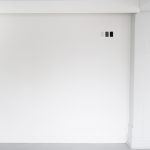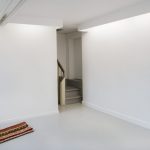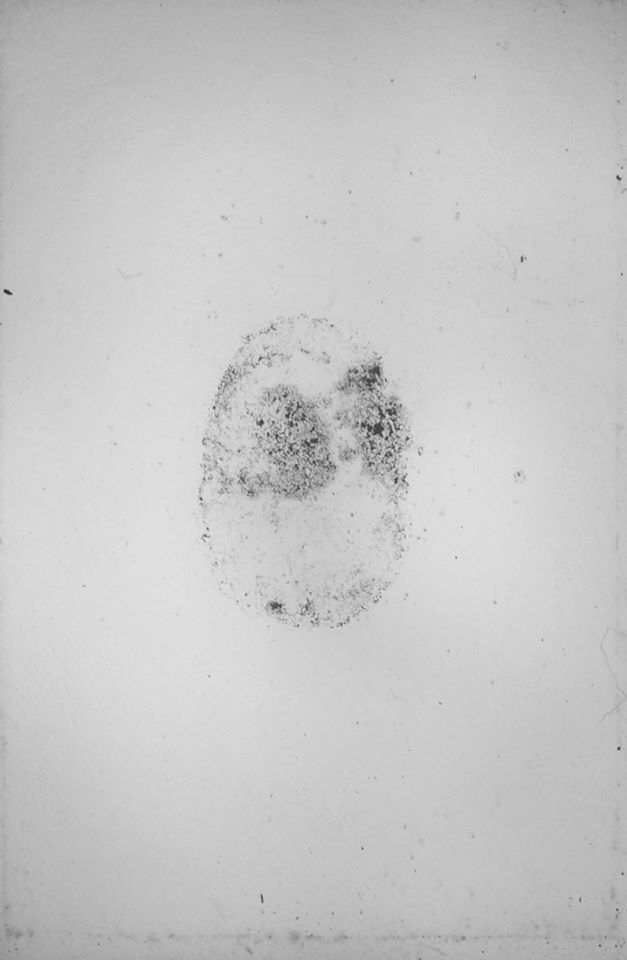To practise yoga in space, is to preserve a memory of gravity.
I 1984 sendes den indiske kosmonaut Rakesh Sharma ud i rummet, ombord på den sovjetiske Soyuz T-11 mission. En af hans mange opgaver er at undersøge, hvordan yoga påvirker sindet og kroppen i et vægtløst rum. Sharma har medbragt et kamera, sit eget, til at dokumentere sine oplevelser. Billederne er sort-hvide.
Året før opsendelsen af Sharmas mission udgiver den tjekkiske medieteoretiker Vilém Flusser sin bog Toward a Philosophy of Photography. I indledningen til den skriver han, at fotografiet er en signifikant overflade, der betegner “something out there”, i tid og rum, som vi kun kan forstå som en abstraktion. Flusser er især optaget af det sort-hvide fotografi, som han betegner som en optisk teori. Der findes ikke en sort-hvid tilstand i verden, det sort-hvide er et konceptuelt grænsetilfælde, skriver han.
Rakesh Sharma mediterer i rummet, men vægtløsheden påvirker hans psyke og nervesystemet. Lys og skygger flyder sammen, og han hallucinerer. Tyngdekraften kontrollerer vores opfattelse af tiden og vores forankring i rummet. Sharma er den første – og sidste – indiske kosmonaut. Han svæver over jorden og oplever måske dét, der ifølge gammel hinduistisk filosofi kaldes MAUNA.
Den sort-hvide tilstand eksisterer ikke i den virkelige verden, men det burde den, skriver Flusser. Hvis vi opfattede verden i sort-hvid, ville den være tilgængelig for logisk analyse. På dette tidspunkt er han efter et mangeårigt eksil i Brasilien vendt tilbage til Europa,. Om dette eksil har han i sin bog Rootless: A Philosophical Autobiography skrevet, at i dét øjeblik, den eksilerede bliver i stand til at transcendere sin egen kultur – det vil sige dén kultur, man har mistet fodfæste i – bliver en anden form for oplevelse af kulturelt tilhørsforhold muligt.
Den eksilerede svæver, skriver Flusser.
Udstillingen er støttet af STATENS KUNSTFOND
_____________________________________________________________________
To practise yoga in space, is to preserve a memory of gravity.
In 1984 the Indian cosmonaut Rakesh Sharma is sent into outer space, aboard the Soviet Soyuz T-11 mission. One of his many tasks is to explore how yoga and meditation affect the body and the mind, in a non-gravitational environment. Sharma carries a camera with him, it is his own, to document his experiences. The images are black and white.
The year before the launch of Sharma´s mission the Czech media theoritician Vilém Flusser publishes his book Toward a Philosophy of Photography. In the introduction to it he writes that a photography is a significant surface, it signifies “something out there”, in time and space, which we can only perceive as an abstraction. Flusser is especially concerned with the black and white image, which he regards as an optical theory. There isn´t such a thing, as a black and white condition in the world, the black and white is a conceptual borderline case, he writes.
Rakesh Sharma meditates in space, but the microgravity has an impact on his psychic condition and the nervous system. Light and shadows blur, and he hallucinates. Gravity controls our perception of time and our connection with the physical surroundings. Sharma is the first – and last – Indian cosmonaut. He floats above the Earth and possibly experiences the ancient Hindu concept of MAUNA.
The black and white condition doesn´t exist in the real world, but it ought to, Flusser writes. If we perceived the world in black and white, it would be more accesible for logical analysis. At this time, Flusser has returned to Europe after many years of exile in Brazil. In his book Rootless: A Philosophical Autobiography, he has written about this exile that the moment the exiled is capable of transcending his own culture – i.e. the culture he has lost a foothold in – a different kind of cultural experience becomes possible.
The exiled hovers, Flusser writes.
The Exhibition is supported by THE DANISH ART FOUNDATION







